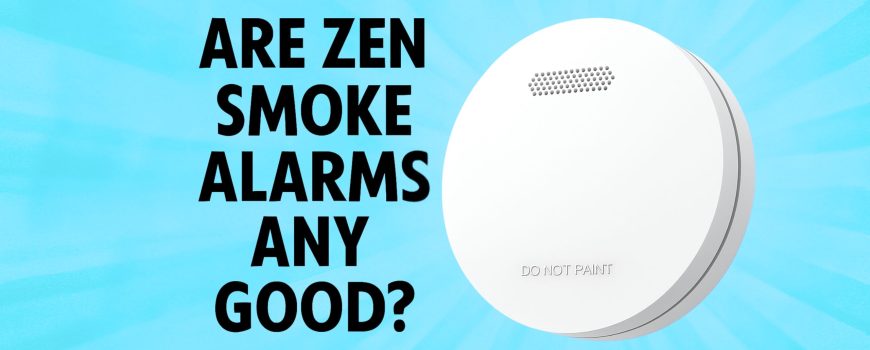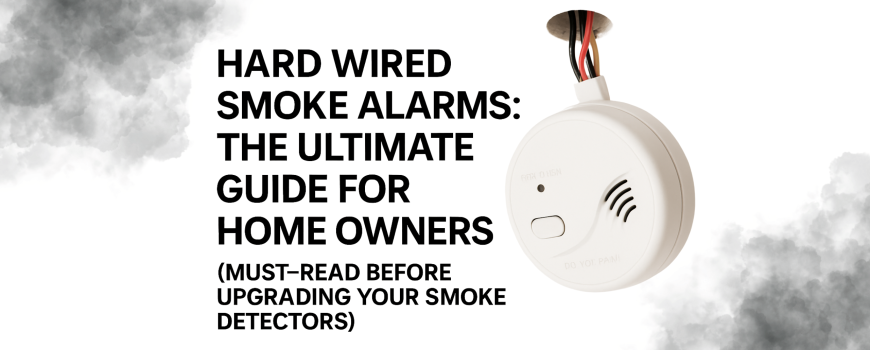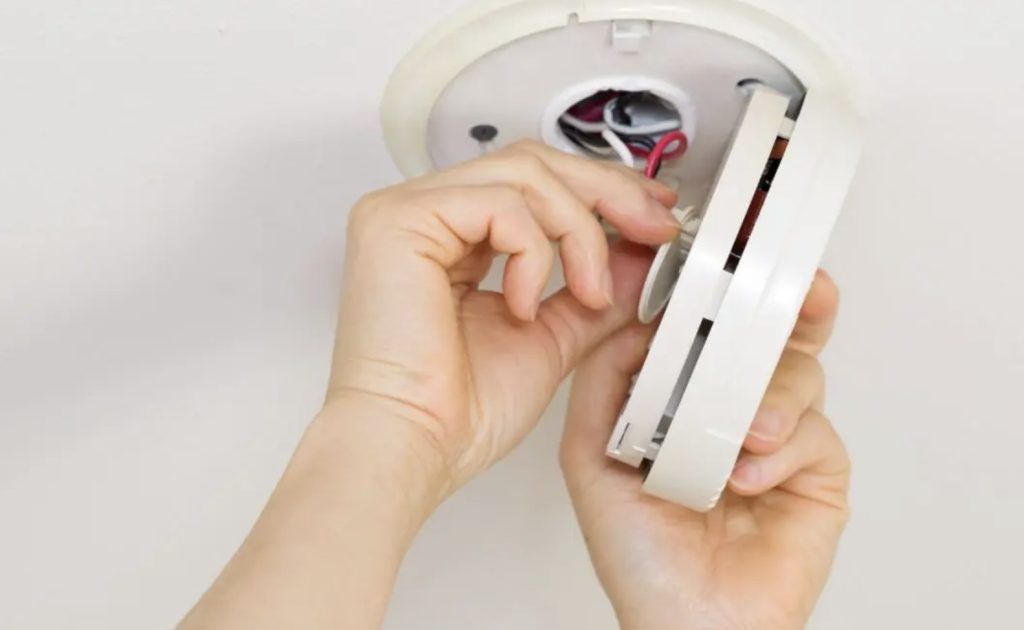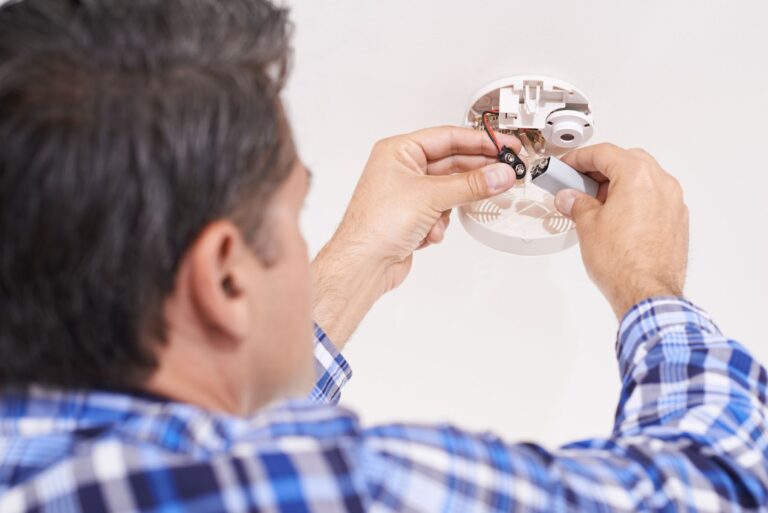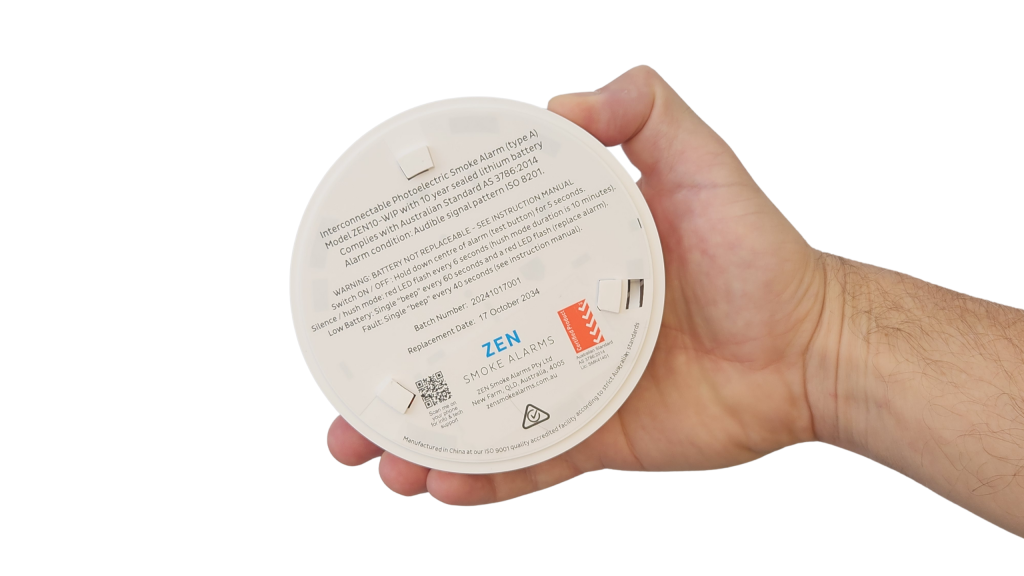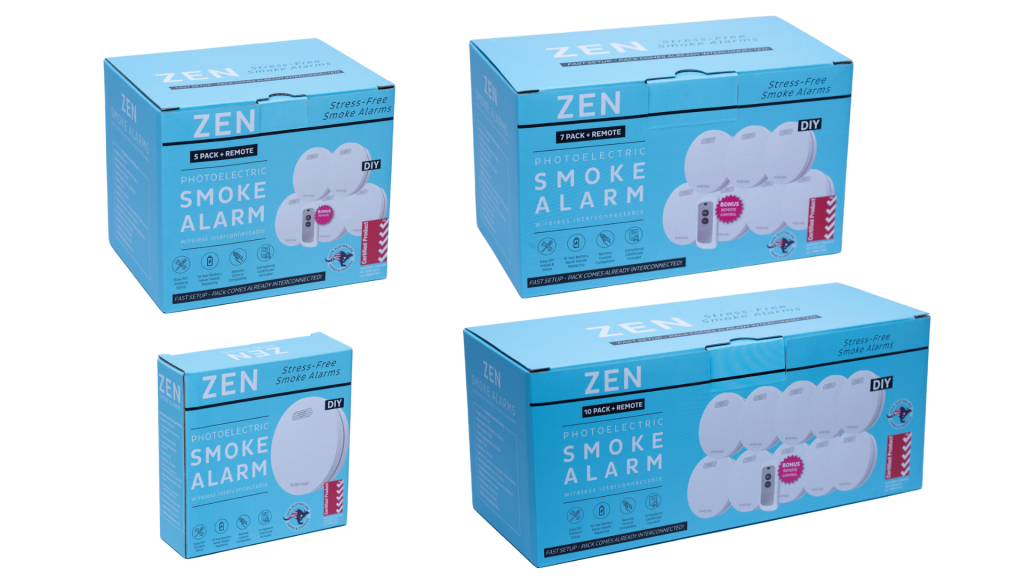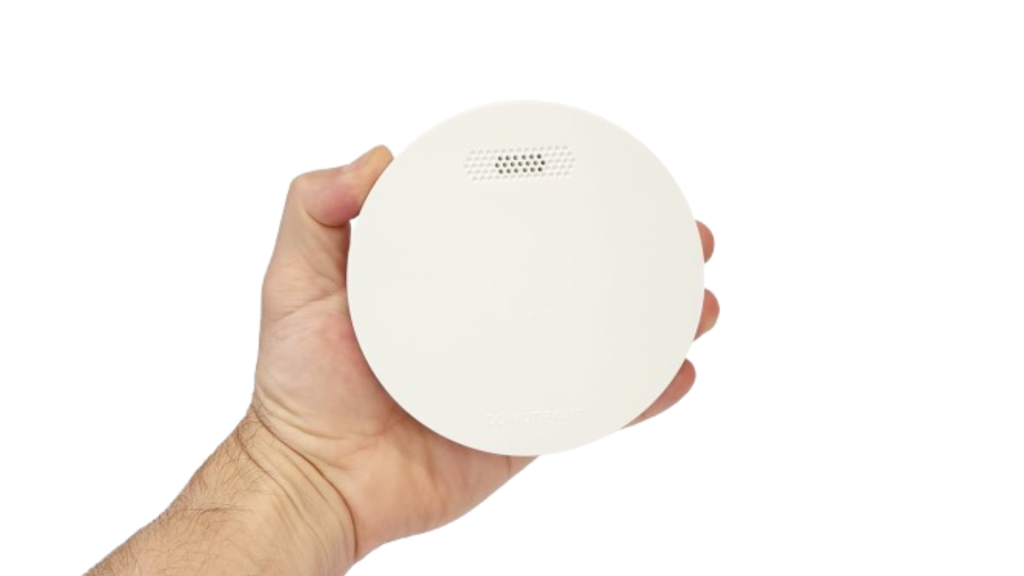If you’re shopping for new smoke alarms in Australia, you’re probably wondering: are ZEN Smoke Alarms any good? With Queensland’s updated smoke alarm laws now in full swing and more changes coming in 2027, many homeowners and landlords are taking this opportunity to upgrade their smoke alarm systems—and ZEN Smoke Alarms are becoming a popular choice.
In this comprehensive ZEN Smoke Alarms review, we’ll take an honest look at what this Australian-owned brand has to offer, the features that stand out, how they compare to other options on the market, and whether they’re worth the investment for your home. You will be able to answer the question ‘Are ZEN Smoke alarms any good?’
What Are ZEN Smoke Alarms and Are ZEN Smoke Alarms Any Good?
ZEN Smoke Alarms are modern, wireless, photoelectric smoke alarms designed specifically for Australian homes. They meet all requirements under Australian Standard AS 3786:2014, and are particularly well-suited for homes in Queensland, where laws now require interconnected, photoelectric smoke alarms to be installed in every bedroom, hallway, and on each level of the home.
Designed to be DIY-friendly, ZEN Smoke Alarms come in pre-connected bundle packs, include 10-year non-replaceable lithium batteries, and even come with a free remote control for easy testing and silencing.
Key Features
Let’s look at the key features that make ZEN Smoke Alarms stand out:
✅ Photoelectric Detection
All ZEN Smoke Alarms use photoelectric sensor technology, which is widely regarded as safer than older ionisation models. Photoelectric alarms are faster at detecting slow-smouldering fires—common in bedrooms and lounges—and are less prone to false alarms caused by cooking smoke or steam.
✅ Wireless Interconnection
One of the key selling points highlighted in many ZEN Smoke Alarms reviews is their wireless interconnection. When one alarm is triggered, all alarms sound simultaneously. This is important for early warning, especially in multi-level or multi-bedroom homes. And unlike some systems, ZEN alarms don’t require internet, Wi-Fi or a base station.
✅ 10-Year Sealed Battery
Each alarm comes with a sealed 10-year lithium battery. That means no more low-battery beeping in the middle of the night, and no more replacing batteries every year. Once installed, you’re covered for a full decade of protection.
✅ Easy Self-Installation
If you’re not an electrician—no worries. ZEN Smoke alarms are designed for easy self-installation, and the bundle packs come pre-interconnected straight out of the box. Just follow the included instructions or scan the QR code on the box, and mount each alarm using the provided screws and bracket.
✅ Free Remote Control
Each ZEN bundle pack includes a remote control that allows you to test or silence all alarms without climbing ladders or pressing buttons on the ceiling. It’s a small feature, but one that’s often appreciated by families and older homeowners.
Are ZEN Smoke Alarms Any Good?
So, let’s answer the question many Australians are asking: Are ZEN Smoke Alarms any good? Based on customer feedback, features, compliance, and ease of use, the answer is yes—especially for those who want a stress-free, reliable, and legally compliant solution for their home.
ZEN Smoke Alarms are well-suited to meet Queensland’s strict legislation, and because they’re already interconnected and battery-powered, installation is simple and doesn’t require a tradie or licensed electrician. The brand’s focus on Australian standards and local customer service adds extra peace of mind. Are ZEN Smoke Alarms any good? – yes they are.
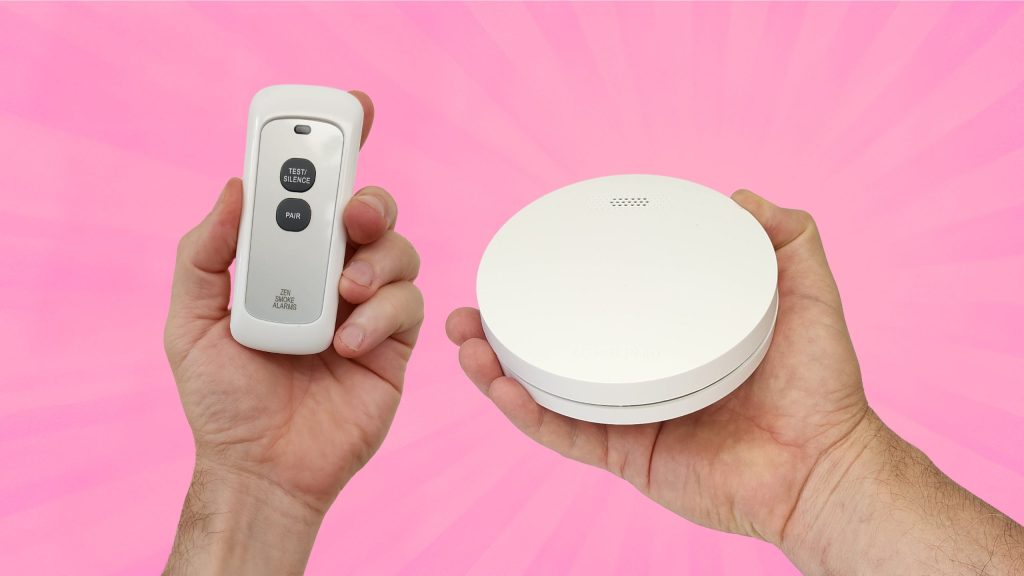
Pros and Cons
Here’s a quick breakdown of what you’ll love—and what to consider:
✅ Pros
- Fully compliant with QLD’s 2022 and upcoming 2027 smoke alarm laws
- Photoelectric sensors offer better fire detection
- Wireless interconnection—no Wi-Fi or wiring needed
- 10-year sealed battery—no replacements required
- Remote control included for easy operation
- DIY installation saves money and time
- Friendly Australian customer support (no overseas call centres or AI chat-bots)
❌ Cons
- Initial bundle cost may seem slightly higher (though cheaper than electrician-installed systems)
- Not compatible with old ionisation alarms—you may need to replace your whole system
- Sold primarily online, which may not suit those who prefer in-store buying
Who Should Buy ZEN Smoke Alarms?
This ZEN Smoke Alarms review found that the product is ideal for:
- Queensland homeowners and landlords needing to meet current or future legal requirements
- Families wanting a safer, modern smoke alarm system
- DIYers looking to avoid costly installation fees
- Property managers needing fast, compliant upgrades for rental homes
- Anyone looking to upgrade from outdated ionisation alarms to new photoelectric technology
What About Customer Support? – Are ZEN Smoke Alarms Any Good?
One thing that shines in nearly every ZEN Smoke Alarms review is the brand’s local support. ZEN is a small, proudly Australian-owned business, and customer enquiries are handled directly by the owner, Christian. There’s no offshore call centre, no chatbots—just helpful, informed support from someone who understands Australian safety requirements inside and out.
Are ZEN Smoke Alarms Any Good? Value for Money?
While ZEN Smoke Alarms may cost more than basic standalone alarms from hardware stores, you’re getting a fully compliant, ready-to-install system that meets strict legal requirements in Queensland. Factor in the 10-year battery, wireless interconnection, and bonus fire blanket or remote control in every bundle, and the value is clear.
You also avoid the extra cost of electrician installation, which is often required for hardwired alarm systems.
Final Thoughts: Are ZEN Smoke Alarms Worth It?
To wrap up this ZEN Smoke Alarms review, we believe the product offers a solid mix of safety, simplicity, and value. For those still wondering “are ZEN Smoke Alarms any good?”, the evidence suggests they are not only good—but genuinely one of the better options available for Australians looking for photoelectric, interconnected smoke alarms.
They’re especially practical for Queensland homes, given the 2027 compliance deadline. If you want an easy-to-install, reliable, and compliant system without dealing with wiring or technical hassles, ZEN Smoke Alarms are well worth considering.
Where to Buy
You can purchase ZEN Smoke Alarms online from Harvey Norman Marketplace, MyDeal, or from the official website for the best prices:
👉 www.zensmokealarms.com.au
Free shipping is available Australia-wide, and bundle packs include everything you need to get started.
Still asking yourself, are ZEN Smoke Alarms any good? Based on customer experiences, independent reviews, and the product’s standout features, the answer to are ZEN Smoke Alarms any good? appears to be a resounding yes. Their ease of installation, long battery life, and wireless interconnectivity make them a top choice, especially for DIY-minded users. So if you’re still weighing your options and wondering, are ZEN Smoke Alarms any good?, it might be time to take a closer look for yourself—and see why so many Australians are choosing ZEN for peace of mind and protection.

Want to know more? Watch our ZEN Smoke Alarm YouTube channel or call us on 0478 596 402 today
We love talking smoke alarms!
ZEN Photoelectric Smoke Alarms
New Farm, QLD, 4005

